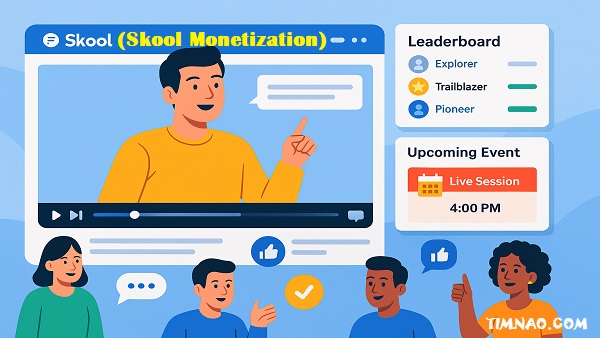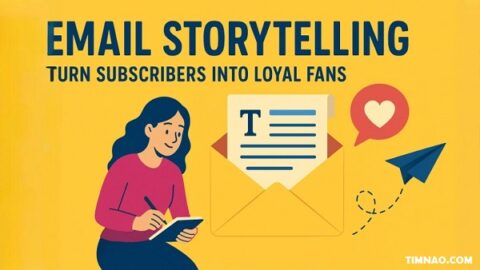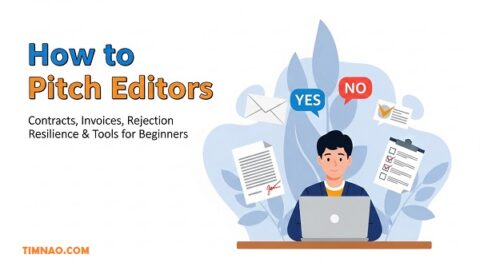The Surprising Truth About Skool Monetization: Unlock Real Income with Online Communities 🚀
If you’ve ever dreamed of turning your passion, knowledge, or niche expertise into a thriving online business, you’re not alone. The challenge? Most platforms are either too complicated, too expensive, or just plain overwhelming—especially for beginners.
That’s where Skool comes in.
Skool is revolutionizing how creators, coaches, consultants, and even hobbyists build and monetize online communities. It combines everything you need—community discussions, course hosting, gamification, and monetization tools—into one beautifully simple platform. And the best part? You don’t need to be a tech wizard or social media influencer to succeed with it.
In this guide, we’ll walk you through everything you need to know about Skool monetization—from setting up your first group to building an engaged audience and generating consistent income. Whether you’re starting from scratch or looking to scale what you’ve already built, this article breaks it all down in a beginner-friendly, step-by-step format.
Let’s explore how you can build a real business around your passion with Skool.
📚 Table of Contents
- 🎯 What Is Skool & Why It’s Changing the Game
- 🧠 Planning Your Skool Community for Profit
- 💡 Choosing the Right Monetization Model
- 🧱 Building an Engaging, Profitable Community
- 🧲 How to Attract, Retain, and Excite Members
- 🔄 Turning Engagement Into Revenue: Proven Strategies
- 📈 Growing Your Community Organically and with Ads
- 🌐 The Future of Skool & Scaling Your Impact
- ✅ Final Takeaways for Beginner Monetizers
🎯 What Is Skool & Why It’s Changing the Game
In a digital world overflowing with noise, platforms that bring real value stand out fast. That’s exactly what Skool is doing—and it’s changing the game for creators, coaches, and community leaders.
Skool is a hybrid platform that combines the best features of an online course portal, private social network, and membership site into a single, easy-to-use community space. If you’ve ever juggled Facebook groups, Zoom links, Kajabi courses, and Stripe payments, you’ll instantly understand why Skool is gaining so much attention.
✅ The Simplicity of Skool
What makes Skool different is its laser focus on simplicity and connection. It strips away the clutter of traditional platforms and offers a distraction-free space where community comes first. No ads. No algorithm tricks. Just people, learning and growing together.
Think of it as a private clubhouse for your niche—complete with discussion boards, content libraries, gamified leaderboards, live events, and direct monetization tools. Whether you want to teach a skill, sell access to exclusive content, or just gather your tribe, Skool makes it possible without needing 10 separate apps.
🔥 Why Skool Works So Well for Monetization
What sets Skool apart from other tools like Discord, Facebook Groups, or even course platforms like Teachable is how naturally it helps you make money. Monetization is built right in—from selling memberships and courses to offering services, upsells, and even affiliate income.
Here’s what makes Skool an ideal platform for turning a passion into a paycheck:
- Tight-knit engagement → Members interact more frequently, leading to stronger trust.
- Built-in payment options → No need to integrate with third-party checkout tools.
- Gamification → Keeps your members hooked with fun points and leaderboard systems.
- Marketplace-ready → Members can buy courses and services directly from your classroom.
If you’re an entrepreneur, coach, or content creator looking for a smarter way to engage and earn, Skool offers one of the most streamlined and effective solutions in 2025.
🧠 Planning Your Skool Community for Profit
Before jumping in and launching your first Skool group, take a moment to get strategic. The most successful Skool communities don’t just happen—they’re carefully designed with monetization in mind from day one.
Here are the key things to consider when planning:
1. Define Your Community’s Role in Your Business
Are you using Skool as a lead generator for your high-ticket services? A standalone paid membership? Or maybe as a community-focused coaching platform?
There are no wrong answers—Skool is flexible. But clarity is crucial. Once you decide what role your Skool group plays, everything from your content to pricing strategy becomes much easier.
2. Know Your Niche
Successful communities don’t try to appeal to everyone. They attract specific people with specific problems. That’s why niching down is key.
Instead of “Entrepreneurs,” target “First-time coaches launching their first group offer.” Instead of “Fitness fans,” try “Busy moms who want 20-minute home workouts.”
Get crystal clear on:
- Who your ideal members are
- What problem they want solved
- How your expertise can help them achieve a result
When your community feels tailor-made, people are far more likely to join—and pay.
3. Choose Between Free vs. Paid
Your Skool group can be free to join, paid, or a mix of both. Here are the most common setups:
- Free group → Sell high-ticket coaching/services
- Free group → Upsell to premium membership
- Paid group only (e.g., $49/month for exclusive access)
- Combo (e.g., a free public group + VIP room for paid users)
We’ll go deeper into these models later, but the key is choosing one that aligns with your offer stack and goals.
💡 Choosing the Right Monetization Model
Skool gives you tons of options to monetize your knowledge and build a thriving online income stream. Let’s break down the top ways beginners can start earning from day one.
1. Use a Free Group to Sell High-Ticket Offers
This is perfect for coaches, consultants, and freelancers. Create a free Skool group where you share tips, insights, or host mini trainings. As you build trust, invite members to book a call for your premium offer.
Example: A business coach offers a free “Launch Lab” community and sells a $5,000 mentorship to active participants.
2. Free Group → Paid Group Upgrade
Offer value in your free community, then invite members to upgrade to a premium version for deeper support, exclusive trainings, or private coaching.
Example: A digital artist runs a free community for beginners and offers a $29/month VIP group with weekly critique sessions.
3. Paid-Only Community
Charge members upfront to join your group. You’ll need to justify the value quickly, but this model works well if you already have an audience or unique offer.
Example: A crypto trader sells access to their market calls, tools, and analysis for $97/month.
4. Sell Courses Inside Skool
Use the Classroom feature to upload full training programs, mini-courses, or playbooks. Members can purchase these on top of or outside your community subscription.
5. Promote Skool as an Affiliate
Skool has a generous affiliate program. If you love the platform, share your experience and make recurring commissions when people sign up through your link.
6. Sell Other People’s Communities
You can earn as an affiliate by promoting other paid Skool communities, especially if you have an audience aligned with that niche.
🧱 Building an Engaging, Profitable Community
Creating a profitable community on Skool isn’t just about content—it’s about connection. The best Skool groups feel like trusted spaces, not just online classrooms. People don’t just join for the content; they stay for the vibe, the relationships, and the sense of progress.
Let’s break down how to set that vibe right from the start.
🎯 Craft a Powerful First Impression
Your community’s identity begins the moment someone visits your Skool page. You only get one chance to make a first impression, so make sure it’s:
- Visually professional – Use clean, branded graphics for your cover image, icons, and classroom thumbnails. Tools like Canva make it easy, even if you’re not a designer.
- Clear and concise – Your “About” section should quickly answer: Who is this for? What will they gain? Why should they join?
- Actionable – Always include a call-to-action like “Join now,” “Start here,” or “Watch the welcome video.”
These simple touches boost trust and help potential members see the value before they even click “Join.”
🛠️ Use the Classroom to Deliver Real Value
Skool’s Classroom is where you house your lessons, courses, templates, or tools. To increase retention and perceived value:
- Organize content into clear modules (e.g., “Start Here,” “Advanced Tactics,” “Templates & Resources”).
- Mix video, text, and downloadable materials to appeal to different learning styles.
- Offer both free and premium lessons to create a natural upgrade path.
Pro tip: Add “teaser” lessons that are locked behind a paywall. This creates curiosity and gives members a reason to upgrade.
🎲 Boost Activity with Gamification
One of the most unique features of Skool is its built-in leaderboard system. Every time someone participates—likes a post, comments, shares—they earn points. You can customize this system with fun level names and even add rewards to make engagement feel exciting.
Example level ideas:
- Level 1: Newbie Navigator
- Level 3: Trusted Contributor (reward: access to a secret mini-course)
- Level 5: VIP Insider (reward: free ticket to a private coaching call)
- Level 7: Legacy Leader (reward: lifetime membership or exclusive merch)
Gamification taps into the natural desire to progress, compete, and be recognized—making your Skool community more sticky.
📅 Schedule Monthly Live Events
Nothing keeps a community engaged like live interaction. Use Skool’s built-in calendar to host:
- Monthly Q&A Calls
- Workshops or Masterclasses
- Guest Expert Sessions
- Challenge Kickoffs (like “30 Days to Launch Your Offer”)
Live sessions give members something to look forward to and build a deeper connection between you and your audience.
🧲 How to Attract, Retain, and Excite Members
Once your Skool community is set up and looking sharp, the next step is bringing in the right people—and keeping them excited to show up.
This part is where many new Skool creators struggle. But don’t worry—we’re breaking it down into simple, effective strategies for Skool monetization success.
📢 Start with Organic Outreach
Don’t wait for people to “stumble upon” your Skool group. Proactively invite your ideal members from:
- Your email list
- Your Instagram or TikTok followers
- Your YouTube channel or podcast listeners
- Facebook groups (where your audience already hangs out)
Write a simple, benefit-driven invitation. Example:
“I’ve created a free space for [target audience] to connect, learn, and grow together—with zero distractions and full access to me. Want in? Join here 👉 [your Skool link]”
Organic outreach brings warm leads—people who already trust your voice and are more likely to convert.
💥 Create a Magnetic Onboarding Experience
When someone joins your group, don’t just leave them hanging. Guide them with a “Start Here” post that lays out:
- What to expect
- Where to begin (e.g., “Watch this 3-min intro video”)
- What to do first (e.g., “Introduce yourself in the Welcome thread”)
The faster people feel oriented and welcomed, the more likely they are to stick around.
You can also create a welcome video with tools like Loom or Veed.io to add a personal touch.
🎉 Keep the Vibe Alive with Regular Interaction
People join for content. But they stay for the conversation. Here’s how to keep the group active:
- Post weekly engagement threads like “Monday Wins” or “Ask Me Anything Thursday.”
- Highlight members in a “Member of the Month” spotlight.
- Celebrate small wins: If someone finishes a course module or hits a milestone, give them a shoutout.
Engagement doesn’t have to be complicated—it just has to be consistent.
🔄 Encourage Value-Driven Contributions
Skool is not a one-man show. The real magic happens when your members start supporting each other.
- Ask open-ended questions to invite discussion (e.g., “What’s one tool you can’t live without this week?”)
- Encourage people to share tips, resources, or client results
- Promote a culture of helpfulness by acknowledging great comments or even offering small rewards
People love being recognized. By shining a light on their contributions, you spark a loop of continued engagement.
📬 Use Anticipation to Boost Retention
Want your members to want to come back each week? Create anticipation.
- Share a “What’s Coming This Month” preview
- Tease upcoming content or events (“Big announcement dropping Friday!”)
- Offer early access or behind-the-scenes perks for engaged members
This forward momentum keeps your Skool community exciting and sticky—key factors in long-term Skool monetization.
🔄 Turning Engagement Into Revenue: Proven Strategies
Now that your Skool community is active and engaging, it’s time to turn that momentum into actual income. You’ve built trust—now it’s about offering value that members are excited to pay for.
Let’s break down the top beginner-friendly Skool monetization methods you can start using right away.
💰 1. Sell Premium Memberships
Once your free community proves valuable, offer an upgrade path. A paid tier might include:
- Exclusive workshops
- Deep-dive tutorials
- Direct access to you for coaching or feedback
- Monthly mastermind sessions
Keep it simple at first—many creators start with $29–$99/month. Use Skool’s built-in payment system to keep everything under one roof.
🧩 Pro Tip: Offer a 7-day trial or a low-cost first month to reduce friction for new subscribers.
📦 2. Launch Micro-Courses or Digital Products
Use Skool’s Classroom to launch a “mini course” or toolkit. These should solve a specific problem and require minimal time to create.
Examples:
- “Instagram Growth Playbook” ($19)
- “90-Minute Email Marketing Crash Course” ($49)
- “Client Proposal Templates Pack” ($29)
These small offers work great as upsells or standalone purchases. Plus, once created, they become evergreen assets that generate income passively.
🎓 3. Run Live Workshops or Challenges
Hosting live sessions creates a sense of urgency and exclusivity. You can charge for:
- One-off workshops
- Multi-day challenges (e.g., “5-Day Course Creation Bootcamp”)
- Cohort-based programs
Members love live experiences because they offer real-time results and more access to you.
🧲 Tie the event into your community theme to increase perceived value and conversions.
🔁 4. Offer Services or Consulting
If you offer done-for-you services, strategy sessions, or coaching, your Skool group is the perfect place to nurture and close leads.
Rather than cold pitching, you let your content and leadership build trust over time. Then you can:
- Invite members to book a discovery call
- Showcase success stories
- Drop CTAs for 1:1 services in relevant threads
This is one of the most effective ways to make money with Skool—especially for freelancers and coaches.
🤝 5. Promote Affiliate Offers
Skool also works great for affiliate marketing. You can:
- Promote Skool itself via their affiliate program
- Share tools, courses, or products you love and use
- Embed affiliate links inside your lessons or resource guides
Because your members trust your expertise, affiliate links feel helpful, not pushy—as long as you’re genuine.
📈 Growing Your Community Organically and with Ads
Even the best Skool community won’t thrive without fresh new members. Growth is essential—not just for income, but for keeping the vibe alive.
Here are beginner-friendly ways to grow your group organically and through paid strategies.
🌱 Organic Growth Strategies
These methods are free (or low cost) and great for slow-and-steady Skool community building.
🔗 1. Leverage Your Existing Channels
If you already have:
- An email list
- A YouTube channel
- A blog
- Instagram or TikTok followers
…then start there. Promote your Skool community regularly with strong calls to action like:
“Join my free mastermind group here 👉 [your Skool link]”
💬 2. Post in Other Communities (the Right Way)
Find Facebook groups, Reddit threads, or niche forums where your audience already hangs out. Don’t spam. Instead:
- Offer value (answer a question, share a tip)
- Mention your Skool group only when it’s contextually helpful
Being authentic and helpful builds curiosity—people will naturally check your profile and click through.
📹 3. Create Content Around Your Skool Theme
Create content that answers your members’ biggest questions and promotes your group as a solution.
For example:
- YouTube video: “How I Launched a Coaching Business Using Skool”
- Instagram Reel: “3 Tools I Use to Run My Online Community”
- Blog post: “The Step-by-Step Guide to Monetizing Your Skool Group”
Include your Skool link in the bio, comments, or as a clear CTA.
🛠️ 4. Use SEO
Optimize your content (like this very blog post!) with keywords like:
- “Skool monetization”
- “How to build a Skool community”
- “How to make money with Skool”
This helps bring in organic traffic from Google and YouTube over time.
💳 Paid Growth Strategies
If you’re ready to grow faster, investing in ads can accelerate your success.
📢 1. Run Meta or YouTube Ads
Use Facebook, Instagram, or YouTube ads to promote:
- A free Skool community
- A freebie or lead magnet that leads to your Skool group
- A free training or workshop hosted inside your community
Keep your ad message simple: Focus on the result you help people achieve, and why your community is different and valuable.
🧠 Tip: Retarget visitors who checked out your Skool page but didn’t join using custom audiences.
📈 2. Boost Your Most Engaging Content
If a post, video, or reel is already getting attention, boost it. This puts your best-performing content in front of more ideal members with minimal effort.
Paid ads work best after you have some community momentum—don’t rush it until your onboarding and content strategy are dialed in.
🌐 The Future of Skool & Scaling Your Impact
Skool is still evolving. That’s part of what makes it so exciting. New features are being rolled out regularly to support creators, coaches, and educators in fresh and powerful ways.
🔮 What’s Coming on the Platform?
As of 2025, users can expect:
- More payment integrations
- Upgraded analytics and performance dashboards
- Enhanced mobile experiences
- Increased gamification tools and automation
All of this supports your ability to scale your impact without scaling your workload.
🚀 From Solo Hustler to Scalable Business
Once your Skool community is profitable, you can scale by:
- Hiring community managers or co-coaches
- Creating “franchise” versions of your group for different audiences
- Turning your content into a product library that sells on autopilot
Your Skool group becomes a living digital asset—a place where value multiplies, not just for you, but for every member involved.
✅ Final Takeaways for Beginner Monetizers
Starting a Skool group might feel intimidating at first—but it’s actually one of the most beginner-friendly ways to monetize online in 2025.
Here’s a quick recap:
✅ Skool combines content, community, and monetization in one sleek platform
✅ You can start free, build trust, then upsell to courses, memberships, or services
✅ Engagement = trust → trust = income
✅ Organic growth works—but ads can supercharge results
✅ Skool is scalable, sustainable, and designed for creators who care
Whether you’re a coach, freelancer, course creator, or niche hobbyist, Skool gives you the tools to turn your passion into a profitable, engaged community.
The most important step? Just start. Your first member could become your biggest advocate. Your first lesson could spark dozens more.
So pick your niche. Launch your group. Share your value.
And let Skool do the heavy lifting. 🚀
Reference video:









